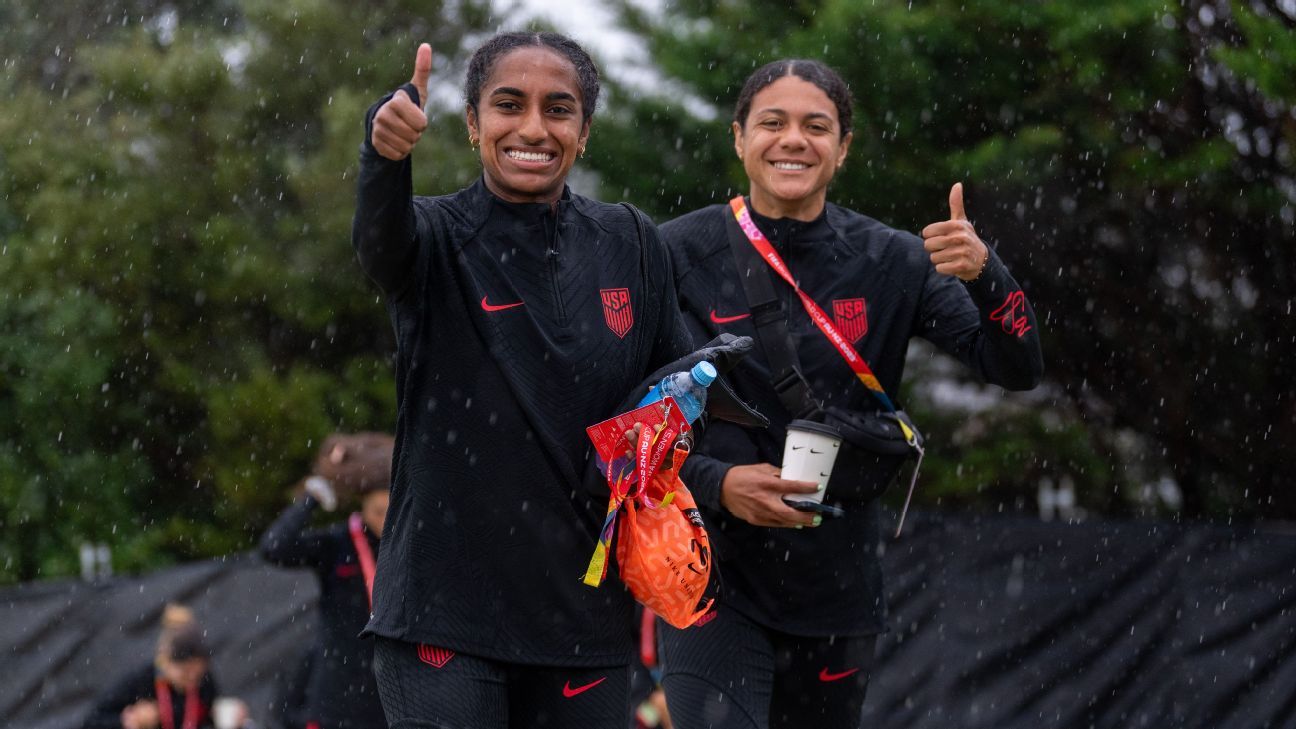AUCKLAND, New Zealand — For the players on the U.S. women’s national team, being at camp for a tournament as big as the Women’s World Cup means having their every need covered so they can focus on one task: winning.
For the more than a month the players will spend here in Auckland during the World Cup, U.S. Soccer is handling all the details, and anything that can give the players an edge come game time is provided. A part big of that? Food, and lots of it.
With a staff of around 10 dedicated just to prepping meals and feeding the players around the clock here, a motto inside camp of viewing “food as fuel” has taken root.
– Meet the USWNT: What you need to know about all 23 players
– Team by team previews: What you need to know
“The meals provide all the fuel needed to all the players to perform at each practice, recovery after each practice, and sleep through the night,” USWNT sports dietician Lindsay Langford told ESPN.
With a highly structured and regimented schedule during this camp, players look forward to meal times as a highlight to their days. Since arriving in New Zealand, several players have mentioned it as being a key time to socialize with teammates and relax — each night, the players and staff even do a “cheers” together with a juice shot.
But the players also look forward to what’s on the menu.
“The food here has been amazing. I love when it’s barbecue night — that doesn’t happen often, so that’s probably why,” forward Lynn Williams said, laughing. “We do have an Asian fusion bowl situation — there are poke bowls and then there’s a teriyaki bowl — I feel like those are very popular.”
The players are offered a large menu that changes every day. There will always be two protein choices, a couple of starches, a couple of vegetables, and then stations where players can create their own salads, fruit platters, yogurt bowls and more.
The staff also does what it calls “player spotlight meals,” in which a player gets to help design a meal with the oversight of the team’s nutritionist and chef.
Williams is a fan of the breakfast offerings and admits she’d like to have it for dinner if she could.
“I’m a breakfast girl at heart, so I love being able to have an omelette station or an egg station and get every single thing you could possibly want. I wish we could have breakfast for dinner so maybe I’ll put that on the menu,” she said, laughing.
Players with special diets are also accommodated. Forward and co-captain Alex Morgan and defender Sofia Huerta have openly discussed being vegan, a diet that involves eating no animal-derived foods, including dairy or eggs. Alana Cook also maintains a plant-based diet, and a few players are specifically dairy-free, Langford said.
The composition of the meals depends on where the players are in the cycle of games they will play.
The day before a game, called “Match Day Minus-1” in World Cup lingo, will feature a carbohydrate-heavy selection. Langford said: “You might find the menu built with a starchy vegetable, an extra premade sandwich option or open-face toast, or entree that screams higher carb.”
The postmatch meals are when the players get to indulge a bit more.
“The day after a game is often times for more ‘fun’ foods on the menu without so much of a ‘functional’ side,” Langford said. “They have to live a little like everyone else — pork bacon, breakfast Danish, but you’ll also find smoked salmon or chia seed pudding to aid in the anti-inflammatory aspect of recovery.”
The staff does its best to appeal to everyone’s palettes while hitting the right nutritional balance — it’s perhaps art as much as science.
“Tacos or anything Mexican and poke bowls are definitely the most popular meals,” Langford said. “I continue to push beets on the menu, but they’re definitely not the most popular item.”
U.S. Soccer did bring its own supply of protein powders and supplements to New Zealand, but otherwise all the ingredients are sourced locally from within Auckland.
Each team participating in the Women’s World Cup was given $960,000 by FIFA for tournament preparations, which can cover operations and training. U.S. Soccer spent a significant portion of that on adding expansions to their base camp in Auckland and renovating the space to fit their needs. The private chef and round-the-clock meals are something U.S. Soccer has done anyway, like during World Cup qualifying in Mexico last year, when a chef designed and prepared all the players’ meals for that tournament.
It’s a luxury that maybe not every team has chosen to invest in, but for defender Emily Fox, she’s glad she and her teammates have it.
“We’re very fortunate that we, one, have a nutritionist and, two, also have a chef,” Fox said. “I’m excited to go to the meal room every day to get some food.”
